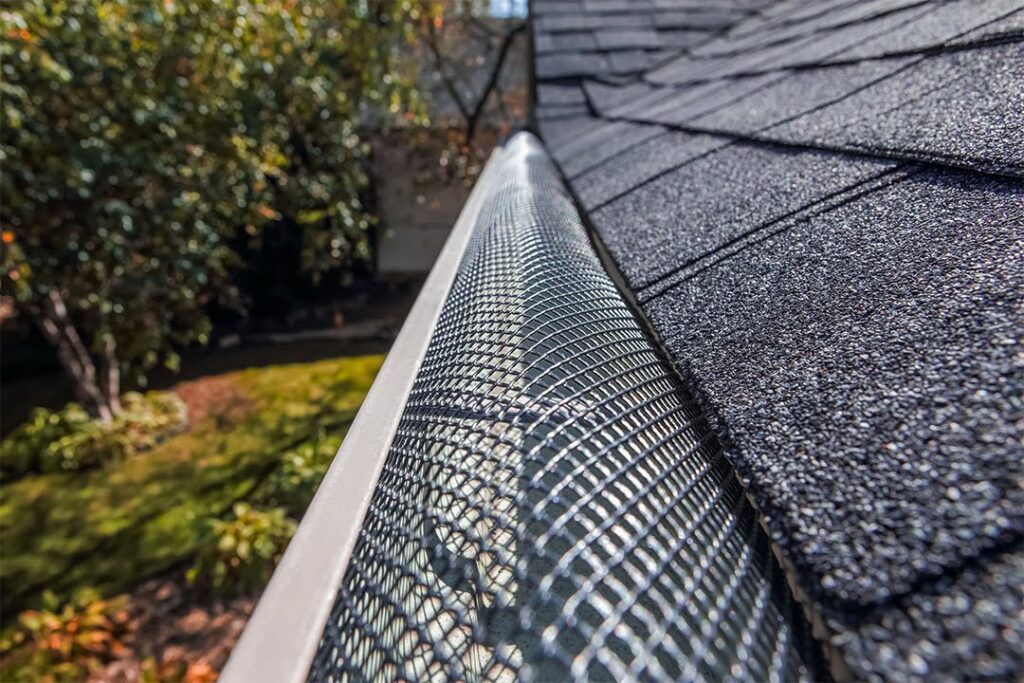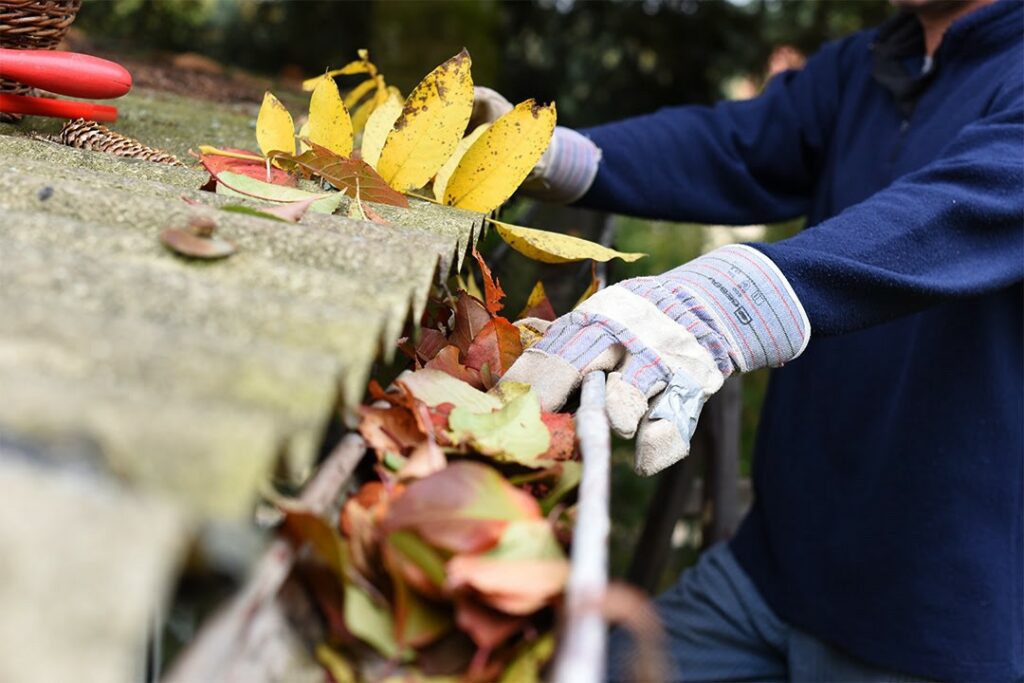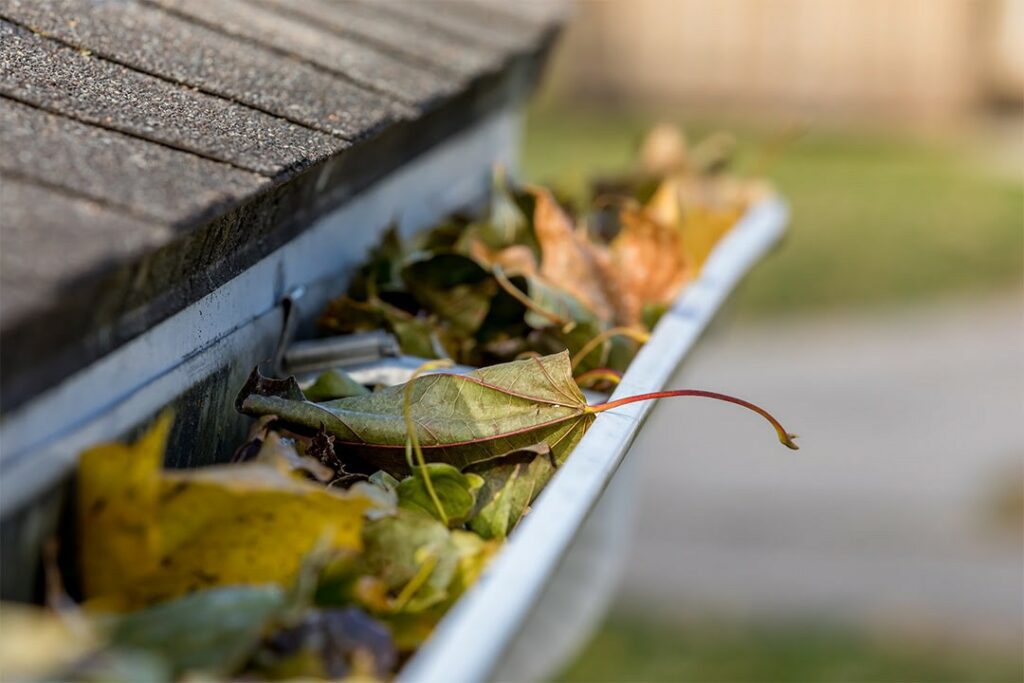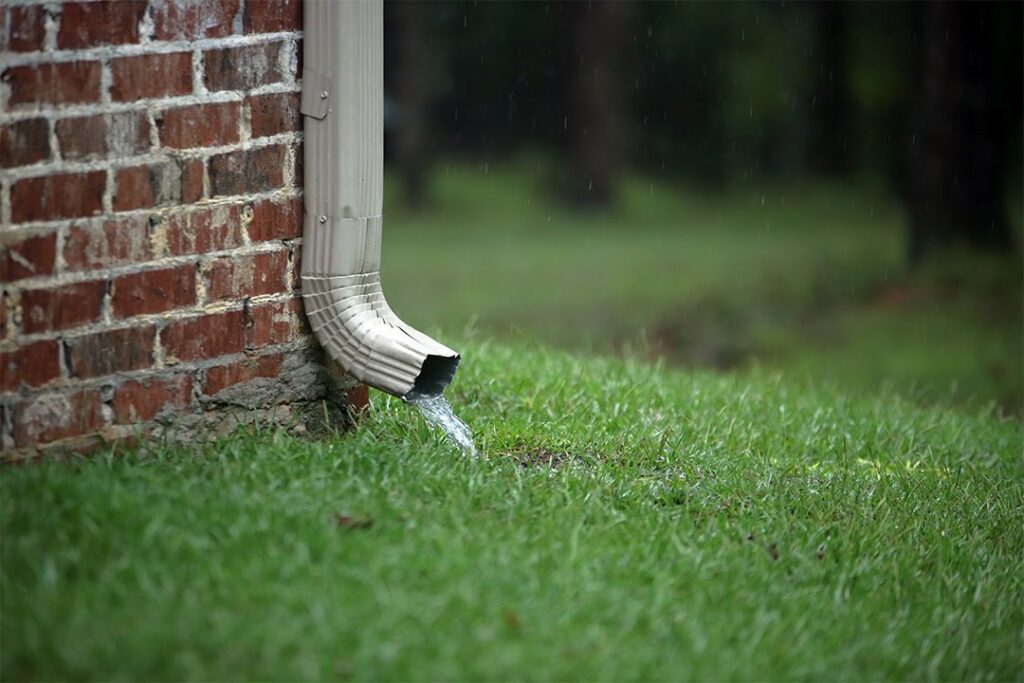
Gutters play an important role in keeping homes in Virginia safe from water damage, but how exactly do they work and when should you service or replace them? Having the answers to these questions can help you make key decisions about how you maintain and clean your gutter system.
Tidewater Roofing has performed custom gutter installations on Virginia homes of all kinds, so we’re overflowing with information about what they do and how to care for them properly. Read on to learn everything you need to know about choosing, purchasing, installing, and maintaining gutters for your home.
See Also: Roof Repairs
What Are Gutters?
Gutters are the parts of your home’s drainage system that carry water off your roof after rain falls or snow melts. These small trenches are usually made from metal of some kind and installed against the edges of your rooftop, above the soffit and fascia.
How Do Gutters Work?
Water that flows off the roof is carried by the gutters to a downspout, where it can flow to ground level and be diverted away from the walls and foundations. This process prevents water from simply flowing down your walls and pooling around the base of your house when it rains, which can cause leaks, rotting, flooding, and other problems.
How Are Gutters Installed?
It’s best to have experienced professionals like us install your gutters to avoid mistakes that could make them less effective. When you call us to fabricate custom gutters and install them in your home, here’s what we do:
Consultation & Fabrication
The first step is to determine the size and shape of the gutters your home will need. We’ll gather details about your home to determine the materials and amount of work involved, then provide you with a quote and timeline for our services. Once you’ve approved the work, we’ll get started.
Checking the Fascia for Rot
It’s vital to make sure your existing roofing materials will be strong enough to hold your new gutters, so we always look for signs of water damage that could compromise the strength of your fascia before we start.
Snapping the Layout Lines
Snapping chalk lines between the highest and lowest points of the gutter run ensures that we can install your gutters accurately. We place the high point 1.25 inches below the drip-edge flashing and create a 0.5 inch slope for every 10 feet of gutter length so that water will flow through the gutters easily.
Attaching Fascia Brackets
Once we find and mark the rafter tails in your fascia, we bore pilot holes into them and use stainless steel lag screws to attach brackets. These brackets will hold your gutters in place.
Cutting the Gutter Sections
Next, we cut your gutters into sections that fit your roof’s edges. Cutting angles into sections that allow them to continue seamlessly around corners is especially important (i.e. 45 degrees for corners with right angles).
Attaching End Caps
End caps allow the sections of your gutters to connect seamlessly. We install these on the square-cut ends of each section using rivets sealed with siliconized caulk.
Cutting Downspout Holes
Once we decide on where to place your downspout, we’ll place an outlet on top of the corresponding gutter section and trace around it to mark the area where the downspout hole will be cut. Then we’ll cut the hole evenly with a saw or chisel so that the downspout can be connected at the end of the process.
Attaching the Gutters to Your Roof
Our team will lay the sections of your new gutter system along the edges of your roof, using the fascia brackets to hold them in place. Then we’ll drill through the side of each section and connect it to the bracket using a screw and nut.
Joining the Corners
We’ll use narrow strips of aluminum (about 3 inches wide) to cover the places where gutter sections come together at corners. After wrapping these strips around the underside of each joint, we’ll hold it in place with screws and use caulking to seal it against the elements.
Adding the Downspout
Finally, we’ll use screws or pop rivets to attach the downspout to the hole we cut earlier. The downspout may also have several sections, depending on its length, and will need to be held in place by brackets to keep it secure. Single story houses typically need two downspout brackets, while two story houses need three.

Signs Your Gutters Need Service
Here are a few signs that your gutters need maintenance, service, or outright replacement:
Overflowing Water
If water is cascading over the sides of your gutters when it rains or as snow melts, they’re most likely clogged somewhere. Material that builds up in any section of your gutter system prevents them from being able to drain water away from your home effectively—and it will have nowhere to go but over the sides, where it can run down the walls of your home and cause damage.
Sagging Gutters
Gutters can become weighed down by clogs, and by the ice dams that form in winter when backed up water freezes solid. This weight can eventually pull them away from the edges of your rooftop, which prevents them from being able to collect runoff and can present a safety hazard if they come loose to the point of falling off.
Stained Siding
Dirty rainwater that runs down the walls of your home can stain your siding, often adding an unpleasant yellow or brown tint in uneven patches. If you notice discolored siding, one of the first things you should do is check your gutters for leaks or blockages.

Plant & Animal Life
Birds, rats, and other pests often choose to build nests in gutters, but the twigs, leaves, and other materials they use create blockages. Moss and lichen can also thrive in gutters because of the moist environment they provide. If you notice animal activity or creeping plant matter around your gutters, it’s probably time to check them and have them cleaned.
When Should You Replace Your Gutters?
You can extend the lifespan of your gutters for years with regular cleaning and proper maintenance, but some types of wear and tear aren’t cost-effective. If you notice any of the following, it’s probably time to have your gutters replaced outright with new ones:
- Cracks in gutter sections. While small cracks and fissures in the material your gutters are made from can sometimes be sealed, this is only a temporary fix and the gutters themselves should be replaced as soon as possible.
- Severe water damage. If you’re noticing large areas of discoloration on your siding, advanced rotting on wooden parts of your exterior (like window sills), or frequent leaking in your basement, then your gutter problems are probably widespread and it will be cheaper to replace them than to try fixing them.
- Too much maintenance. If you find yourself making multiple trips up to your rooftop every season to seal cracks or remove blockages, it’s probably time to think about upgrading your existing gutters to a modern solution that will require less maintenance.
What to Think about When Installing New Gutters
Here’s what you should consider when choosing new gutters for your home:
Width
The size and slope of your roof will determine how wide your new gutters need to be. Essentially, the more water that falls on your roof and the faster it runs toward the edges, the wider your gutters will need to be.
To figure out how wide your new gutters should be, we’ll measure the pitch and square footage of your roof. Then we’ll multiply the square footage by a number that corresponds to the pitch and use the result to find a gutter size that works for you. Most homes in Virginia use 5” gutters, but 6” options are popular for larger homes or those with particularly sloped rooftops.

Downspout Placement
When choosing a location for the downspout, you’ll want to avoid directing water to areas where it can cause damage—like patios, flowerbeds, walkways, and fences. It’s also important to make sure the end of the downspout reaches 4-6 feet away from your home and empties out onto an area that doesn’t slope back towards the foundation. To avoid erosion in the area beneath the downspout, consider using a bed of rocks or gravel.
Ground Grading
Adding soil to the ground around your home’s foundation can create a grade that causes water from the downspout to flow away from the home instead of towards it. Be careful not to use sand or mulch for this, as water will pass directly through these materials and flow along the grade of the soil underneath.
It’s also best to create a gap between your siding and the soil line to prevent moisture from reaching it. We recommend creating a 6-8 inch gap, depending on the type of siding you have (6 should work for moisture-resistant materials like fiber cement, while 8 is better for materials like wood that need more room to dry after it rains).
Leaf Protection & Gutter Guards
If you don’t want to be clambering onto your roof all the time to remove debris from inside your gutters, it’s worth considering leaf protectors or gutter guards. These additions to your gutters create a barrier that permits water to flow through into the gutters beneath while trapping leaves, twigs, and other debris on top so that wind can blow them away later.
Frequently Asked Questions about Gutters
Are Gutter Guards a Good Investment?
Gutter guards are becoming more popular, especially in regions more likely to experience high levels of precipitation in the rainier and snowier months of the year. Not only do gutter guards reduce the likelihood of your gutters overflowing due to a blockage, but they also prevent leaves and other debris from getting stuck on your roof and creating a fire hazard once they have dried.
Since gutter guards also reduce the need to climb on top of your roof and clean your gutters, they lower your risk of an injury. Investing in a set of gutter guards now could prevent a fall or a ladder-related injury later.
How Often Should I Clean My Gutters?
If your home does not have gutter guards, it’s best to clean your gutters at least twice a year. For best results, do this once in the spring before the rain starts falling, and once in autumn before the first snow falls.
Remember, your gutters may need to be cleaned more often if you notice the signs of a blockage listed above. Check out our other posts for more information on when and how to clean your gutters.
What Materials Are Gutters Made Of?
Gutters are usually made from metal, but several different options are available. Here are some of the most common types used in Virginia homes:
- Copper: copper gutters have an appealing look and effectively resist rust, making them an excellent long-term investment.
- Aluminum: these gutters are durable, lightweight, and easy to paint in a variety of colors to match your home’s siding.
- Galvanized Steel: these steel gutters coated in molten zinc can effectively resist warping caused by seasonal temperature changes.
When you contact us about new gutters for your home, we’ll be able to walk you through your options and help you decide on a cost-effective solution.
How Long Do Gutters Last?
Most gutters can be expected to last between 20 and 30 years with proper maintenance. For best results, clean your gutters at least twice a year (or more often as needed) and consider hiring experienced rooting professionals like us to take care of small repairs before they become problems that could require more extensive (and expensive) fixes.
How Long Does Installing Gutters Take?
You’ll need to make an appointment with us in advance, but the actual installation for your new gutters should only take a few hours. Installing gutters on smaller homes (single-story residences or townhouses) often takes under 4 hours, while homes over 3000 square feet or those with particularly steep rooftops may require up to 8. When we provide you with a quote for our work, we’ll also give you a timeline based on your home’s specific needs so you know what to expect.
Do You Need to Replace Soffit & Fascia When Getting New Gutters?
You don’t always need to get new soffit and fascia when you’re having new gutters installed, but if they’ve been badly damaged by leaking water, it might be necessary. Gutters attached to rotting or weakened material are more likely to separate and sag away from your home, ruining your new investment. That’s why we do a thorough inspection of all soffit and fascia around the edges of your rooftop before proceeding with your gutter installation.
Get Help with Your Gutters When You Need It Most
The more you know about gutters and how they work, the more prepared you’ll be to recognize when they need repairs or replacement. To have specific questions about your gutters answered or to get help from industry experts, contact Tidewater Roofing and speak with an experienced member of our team who can give you the help you deserve.
